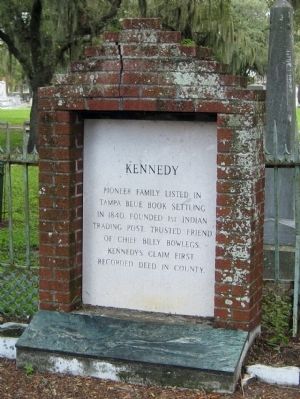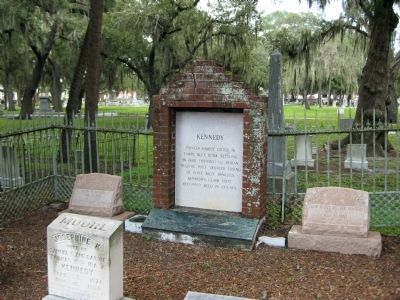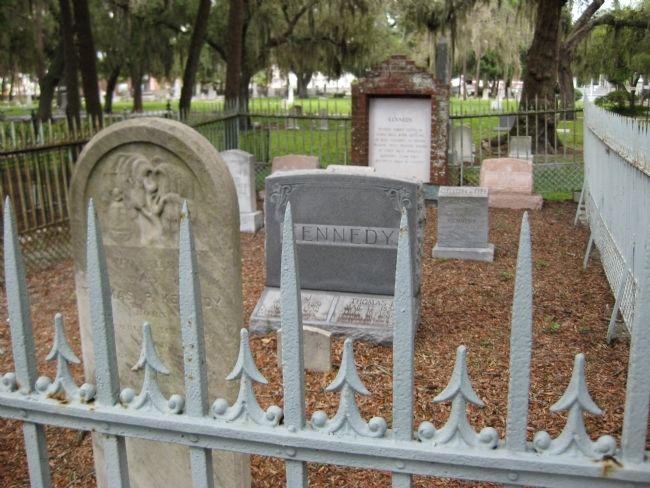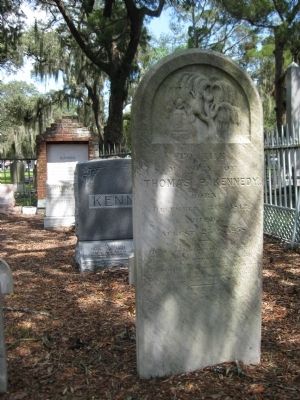Tampa in Hillsborough County, Florida — The American South (South Atlantic)
Kennedy
Topics. This historical marker is listed in these topic lists: Native Americans • Settlements & Settlers. A significant historical year for this entry is 1840.
Location. 27° 57.261′ N, 82° 27.466′ W. Marker is in Tampa, Florida, in Hillsborough County. Marker can be reached from North Morgan Street north of East Harrison Street, on the right when traveling north. Touch for map. Marker is at or near this postal address: 606 East Harrison Street, Tampa FL 33602, United States of America. Touch for directions.
Other nearby markers. At least 8 other markers are within walking distance of this marker. Oaklawn and St. Louis Cemetery (a few steps from this marker); Victims of the Yellow Fever (within shouting distance of this marker); 29 Sea Captains and Mariners (within shouting distance of this marker); Confederate States Soldiers and Sailors (within shouting distance of this marker); U.S.S. Sagamore (within shouting distance of this marker); Tampa Native Americans (within shouting distance of this marker); Fort Brooke Mass Grave (within shouting distance of this marker); Historic Harlem Academy / School #2 (within shouting distance of this marker). Touch for a list and map of all markers in Tampa.
More about this marker. The marker is located in the Oaklawn Cemetery, at the rear of the Kennedy family plot, which is enclosed by an iron fence.
Regarding Kennedy. Nine members of the Kennedy family are buried in the plot at Oaklawn, including family patriarch Thomas P. Kennedy, who died in 1858. The oldest graves in the plot are those of infant twins James M. and John D. Kennedy, who were born in October, 1852. James lived just two days, while John died in February the next year.
Additional keywords. Oaklawn Cemetery
Credits. This page was last revised on June 16, 2016. It was originally submitted on September 15, 2010, by Glenn Sheffield of Tampa, Florida. This page has been viewed 1,022 times since then and 28 times this year. Photos: 1, 2, 3, 4. submitted on September 15, 2010, by Glenn Sheffield of Tampa, Florida. • Bill Pfingsten was the editor who published this page.



